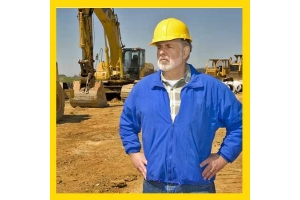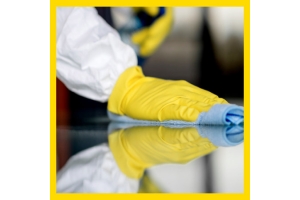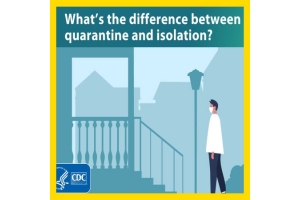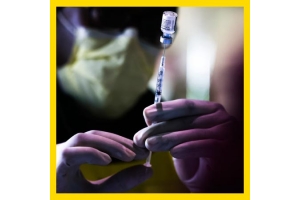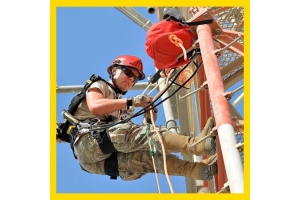Currency
-
August 30, 2020Nieuwegein, The Netherlands — On-the-job exposure to silica, beryllium and certain other metals may be linked to the inflammatory disease sarcoidosis, results of a recent study led by Dutch researchers suggest.
For people who have sarcoidosis, inflammatory cells collect and grow in parts of the body – typically the lungs and lymph nodes – and can potentially damage organs. The cause of the disease isn’t known, “but experts think it results from the body’s immune system responding to an unknown substance,” the Mayo Clinic states. No cure for the disease exists, but treatments are available. In certain instances, sarcoidosis clears up on its own.
For the study, the researchers assessed the potential exposures to silica, beryllium, aluminum and zirconium among 256 sarcoidosis patients and 73 control patients who had obstructive sleep apnea, using the results of a questionnaire -
August 30, 2020Although most facilities or homes will not store chemicals in massive quantities, improperly storing even a small amount of volatile chemicals can cause injury and even worse, death.
The massive explosion in Beirut on Aug. 4, 2020, occurred due to the improper storage of chemicals. About 2,750 tons of ammonium nitrate was stored at the port for six years without preventive measures. The explosion killed 135 people, injured 5,000 people, and will most likely cost around $15 billion in economic losses. Needless to say, properly storing the ammonium nitrate would have saved many lives.
Although most facilities or homes will not store chemicals in massive quantities, improperly storing even a small amount of volatile chemicals can cause injury and even worse, death.
Flammable Versus Combustible
The difference between a flammable and combustible chemical is based on flashpoints, the lowest temperature at which hazardous materials -
August 30, 2020Oregon has proposed an emergency temporary standard for workplace coronavirus disease 2019 (COVID-19) transmission. While there is no federal workplace safety and health standard for coronavirus exposures, California has an airborne transmissible disease standard for certain workplaces, and Virginia approved an emergency temporary standard for COVID-19 in July.
If approved, Oregon’s standard would contain requirements that apply to all workplaces, with additional requirements for job duties involving close-contact work activities and healthcare tasks like direct patient care. The Oregon Occupational Safety and Health Administration (OSHA) is accepting public comments on its draft rule through September 7.
The temporary rule could take effect on September 14 and would remain in effect for 180 days.
Under the temporary rule, all employers in the state would -
August 30, 2020The shipping and trucking industry has had to work within unique OSHA standards for years. As the COVID-19 pandemic continues, logistics companies will have to adapt to new, changing regulations. Not everything is a matter of law, and some guidelines may be unclear, so this isn't always a straightforward task.
Keeping employees and customers safe is essential at any time, but the pandemic brings new concerns. The global economy relies on shipping, but if transportation companies aren't careful, they can contribute to the spread of COVID-19. Here are a few examples of new safety protocols the industry should embrace:
1. Report All Potential Health Concerns
The shipping industry involves a lot of face-to-face interaction, so companies can't afford to take chances in a pandemic. If any employees are feeling sick or have come into contact with someone who's tested positive, they need to report it. That way, managers can schedule them to quarantine -
August 24, 2020For those working at heights, finding the right equipment is essential The Canadian Centre for Occupational Health and Safety (CCOHS) defines working at heights as “any work where a person could fall a distance and be injured. This event might include, for example, falling from a step ladder, off of a roof, or through an unguarded hole in the ground or floor. Fall protection may also be required when working above an open top tank, bin, hopper, or vat.”
Although the exact number may vary depending on each province, OHS laws generally require some kind of action when a worker has the potential to fall about three metres (10 feet), says the CCOHS.
Legislation is typically updated every few years — every three to five years on average, says Erica Cole, product manager at Pure Safety Group. These legal updates are mandatory, but there are voluntary standards as well. One of the major fall protection standards in Canada is CSA Z259.17-16. There are subcategories and -
August 24, 2020New research from the National Institute for Occupational Safety and Health illustrates the increased risk of hearing loss among noise-exposed workers in the service sector.
According to a new update, researchers examined audiograms for 1.9 million noise-exposed workers across all industries, including audiograms for more than 150,000 workers in the service sector, which includes workers in services like security and surveillance; educational training; entertainment and recreation; accommodations and food service; machinery repairing; dry cleaning and laundry; and landscaping. The main findings included:
■ The prevalence of hearing loss within Services was 17 percent, very close to the prevalence of all industries combined (16 percent).
■ However, many sub-sectors greatly exceeded the overall prevalence by large percentages (10 to 33 percent higher), and many had high -
August 24, 2020OSHA is helping to separate facts from rumors about workers wearing cloth masks or other face coverings during the coronavirus pandemic.
The agency addresses this question in its coronavirus FAQ: Does wearing a medical/surgical mask or cloth face covering cause unsafe oxygen levels or harmful carbon dioxide levels to the wearer?
No, says OSHA.
Medical masks, including surgical masks, are routinely worn by healthcare workers throughout the day as part of their PPE and do not compromise their oxygen levels or cause carbon dioxide buildup.
They are designed to be breathed through and can protect against respiratory droplets, which are typically much larger than tiny carbon dioxide particles.
Consequently, most carbon dioxide particles will either go through the mask or escape along the mask’s loose-fitting perimeter. Some carbon dioxide -
August 24, 2020As construction professionals, it feels like we’re always thinking about safety — and yet, our industry is still one of the most high-risk. According to the Occupational Safety and Health Administration (OSHA), one in five worker deaths occurs in construction, accounting for nearly a quarter of all worker fatalities in the United States.The administration reports that over half of all these fatalities are caused by the “fatal four” incidents — falls, struck by objects, electrocutions, and caught-in/between hazards.
However, investing in the right safety procedures, training, workwear, and supplies can drastically reduce the likelihood of a severe accident or fatality happening on your job site. Preventing injuries is key to solidifying an influential safety culture, keeping your workers safe, and safeguarding your company at the same time. Here are signs your construction company needs to rethink its safety culture:
-
August 18, 2020On August 6, the California Division of Occupational Safety and Health (Cal/OSHA) released updated guidance for healthcare employers facing severe shortages of respirators during the ongoing coronavirus disease 2019 (COVID-19) pandemic. The supply chain for respirators has improved but is not yet fully restored, according to Cal/OSHA.
Healthcare facilities in California must comply with the state’s Aerosol Transmissible Diseases (ATD) Standard, which has no federal equivalent. COVID-19 is a respiratory illness caused by the SARS-CoV-2 virus. COVID-19 currently is widespread in most U.S. communities and considered a workplace hazard.
“Respirators must always be immediately available to health care workers who may be called upon to perform emergency aerosol generating procedures on suspected or confirmed COVID-19 patients,” stated a boxed warning in the guidance. A surgical mask may not be used in situations when a respirator is required.
-
August 18, 2020As the novel coronavirus began to shut down the global economy, an EHS Today survey shows safety leaders were ready to battle the virus in the workplace.
It takes a leader to handle unprecedented challenges within the workplace, and the COVID-19 pandemic has shown the essential role of the safety leader. No longer are these professionals viewed as “cops,” but they now are looked at as arbiters of critical decisions that will keep businesses moving forward and employees safe as economic conditions fluctuate.
Just over 700 safety professionals recently participated in an EHS Today editorial survey in which they provided insight into how companies are managing the evolving business environment and what they think workplace safety will look like in the future.
While the majority of respondents represented the manufacturing (33.5%) industry, construction (11.4%), government (7.6%), and oil and gas (5.8%) were among the other industries represented.


